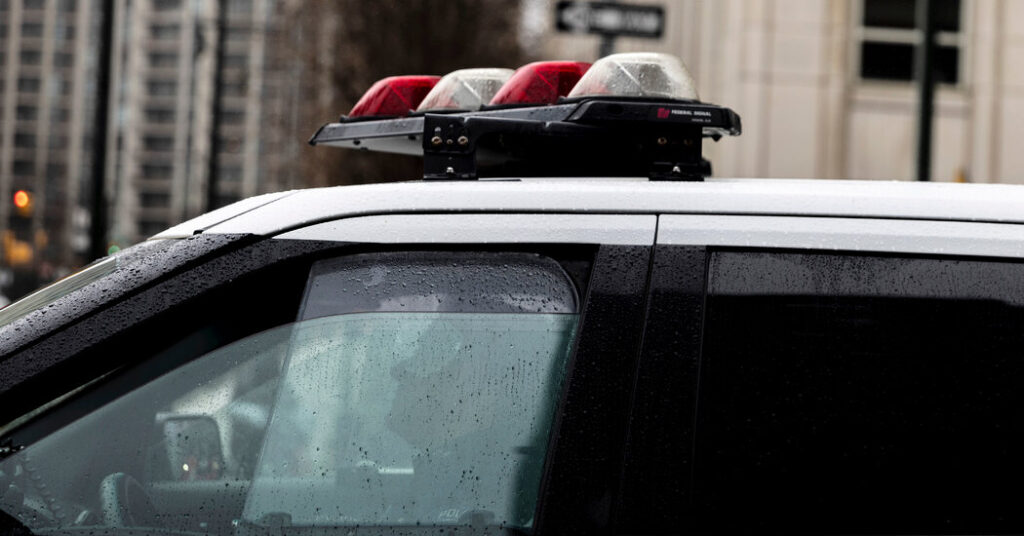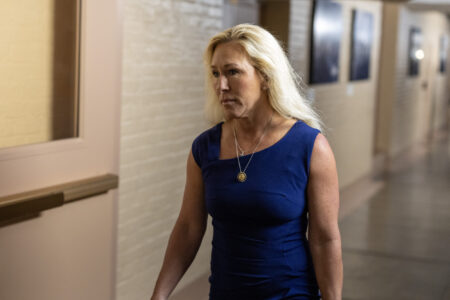New York City police officers will no longer engage in high-speed chases of drivers who break traffic laws or commit other low-level offenses, the Police Department said, in an effort to stop the crashes that have led to serious injuries and deaths in America’s most densely populated major city.
A new policy will prohibit officers from chasing vehicles at their discretion, unless the drivers have committed the “most serious and violent crimes,” meaning felonies or violent misdemeanors, according to a statement released by the police on Wednesday.
“Our officers deserve clear guidance and smart protocols when determining whether to engage in a vehicle pursuit on our streets,” Commissioner Jessica S. Tisch said in the statement. “The N.Y.P.D.’s enforcement efforts must never put the public or the police at undue risk, and pursuits for violations and low-level crimes can be both potentially dangerous and unnecessary.”
The policy comes as New York’s streets are contested as never before, with drivers competing not only with one another, but with pedestrians and riders of electric scooters and bicycles. Congestion pricing has officers looking for drivers who have altered their license plates to avoid toll readers. And legalized marijuana has created a morass as the police must contend not only with drivers who are high, but with how and when to apprehend them.
The new chase rules, which take effect Feb. 1, are a major reversal of the police’s approach since 2022. That year, pursuits began to climb as the department faced a spike in car thefts and complaints of illegal scooters and motorbikes tearing down streets.
While cities like Boston, Washington and Chicago kept strict policies in place, New York loosened its protocols, said Chuck Wexler, executive director of the Police Executive Research Forum, a research group in Washington.
“N.Y.P.D. had always been a department that had one of the stronger policies,” he said. “In the last two years, they were not where most major cities were.”
The shift back to a more restrictive policy is “huge,” Mr. Wexler said.
“New York is a very densely populated place,” he said. “You engage in a high-speed pursuit, it’d better be for something violent or life-threatening.”
Last year, the police engaged in 2,278 vehicle pursuits, according to department figures. A quarter led to a collision, property damage or physical harm, the police said. Sixty-seven percent of the chases occurred after an officer pursued a driver who fled a car stop. Many of those chases would not have been allowed under the new policy, the police said.
The police persisted even as crashes caused by city vehicles have cost the city hundreds of millions of dollars. They also have led to deaths.
Shasha Price, whose brother was killed in 2023 after an unmarked police cruiser collided with his dirt bike during a pursuit, said it was “too late that this policy is happening now.” After the death of her brother, Samuel Williams, his family received a bill for $3,429 saying that Mr. Williams’s vehicle had “damaged city property.”
The bill has since been rescinded, Ms. Price said, but the family has sued. She would like to see the officer who crashed into her brother prosecuted.
Ms. Price believes it’s good that the new policy will “help somebody else,” she said. “But what about my family?”
Alexa Sledge, communications director at Transportation Alternatives, an advocacy group that tracks traffic fatalities, called the change an important step in reducing injuries and fatalities and a “huge victory.”
“We’re really hopeful,” she said, adding, “We’re hoping to see this change happen in policy and practice actually on the ground.”
In a statement, Patrick Hendry, the president of the Police Benevolent Association, said he was grateful that officers in his union would have more clarity.
“However,” he said, “it will be up to the department to ensure that this policy is applied so that neither police officers nor the public are unnecessarily put at risk.”
For decades, the department has vacillated on when to allow high-speed pursuits.
Recently, it had defended the practice, saying that chases have often resulted in arrests for serious crimes like robberies and shootings. In July 2023, John Chell, who was then chief of patrol, said that it was imperative that officers go after dangerous drivers or cars with fake or covered license plates.
“You are not going to drive around this city in a reckless manner, thinking you can do whatever you want to do with your attitude and commit crimes,” he said during a news conference that month. “People thinking they can take off on us: Those days are over.”
But on Wednesday, Chief Chell, now the department’s top uniformed officer, expressed support for the change.
“Our overarching objective — every minute of every day — is to keep the people of this great city safe,” Chief Chell said in the news release announcing the policy. “We need to pursue criminals when appropriate and stay our hand when the risks to the public and to our cops outweigh the benefits.”
The policy is in line with recommendations outlined in a 2023 study by the Police Executive Research Forum, which researched the issue with support from the Department of Justice. That study warned that “pursuits are high-risk events that put the lives of officers, suspects and the public at risk.”
“When pursuits go wrong and innocent, uninvolved people are injured or killed, public trust in the police is undermined,” the study said.
The group urged police agencies to allow pursuits only when a violent crime had been committed or a driver posed “an imminent threat to commit another violent crime.”
“If those two conditions are not met, agencies need to look for alternatives to accomplish the same objective,” the study said. “You can get a suspect another day, but you can’t get a life back.”
The study found that across the country, police agencies have adopted a patchwork of policies on pursuits.
In 2022, New Jersey’s acting attorney general announced a reversal of a state policy that had barred officers from pursuing fleeing drivers. In Chicago, some officials have said the police should reconsider restrictions to deal with a rise in robberies.
In Milwaukee, the fire and police commissioner ordered the loosening of restrictions on car chases to allow officers to go after reckless drivers. Pursuits surged to more than 1,000 in 2022 from 50 in 2012. In 2022, there were 36 pursuits where at least one person who had not been involved was injured, according to Wisconsin Watch, an online news site.
Mr. Wexler, the police forum’s executive director, said that he had met with Commissioner Tisch about two weeks ago and discussed her concerns about pursuits.
“She recognized this as an issue,” he said.
Under New York’s new policy:
-
Supervisors will be responsible for monitoring and managing pursuits and instructing officers to stop if they are reaching high speeds in dense areas or near a school or playground.
-
Officers who stop pursuits for safety reasons “will not be the subject of criticism or disciplinary action.”
-
Technology will be used to keep records on pursuits.
-
There will be monthly reviews to determine whether the policies are being followed or need to be improved.
-
The police will issue an annual report on pursuits.
Alain Delaquérière contributed research.
Read the full article here

















